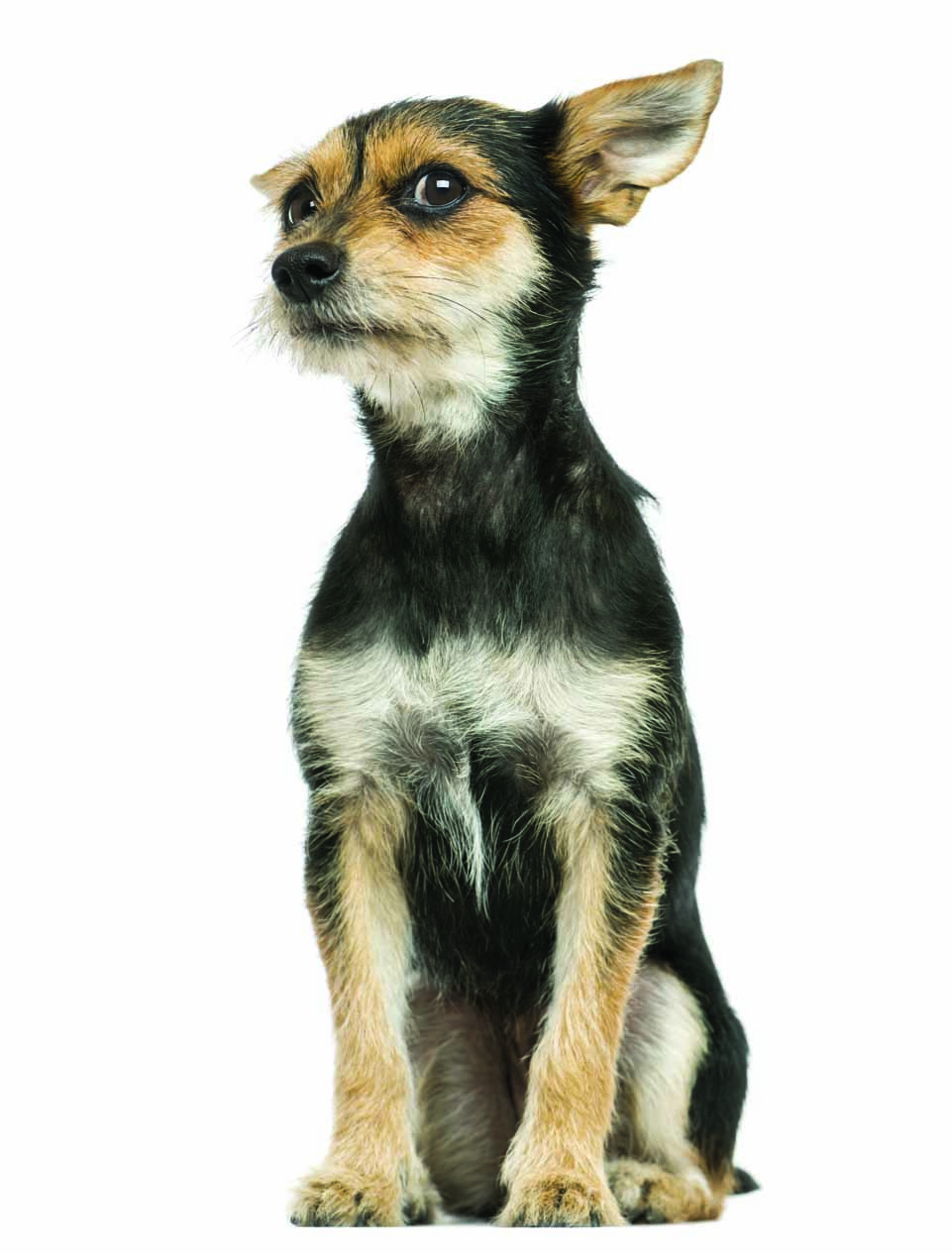
Testing of dogs: CaniLine

CaniLine – Breed Identity Analysis
Due to a corporate agreement, the test is available only for customers located in Czech Republic, Slovak Republic, Poland, Hungary and Russia.
Did it ever occur to you to search for the breeds making up your mixed-breed pet? Or to have the origin of your purebred dog verified? Sometimes, things are not what they appear to be ... The test can differentiate more than 280 dog breeds shown in the list below, while the number of breeds is still being widened.
What are the cases where the CaniLine breed identity test can be applied?
- Dog’s breed purity verification
- Finding out the breeds making up a dog waif
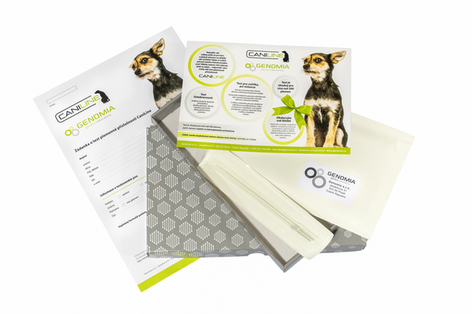
Only some genes can be seen
It is very difficult to identify all the breeds that take part in the unique appearance and nature of a crossbreed; even professionals are only able to determine the parent breeds for sure in 25 %. In dogs, physical appearance is controlled by a small number of genes – about 2 %. It is quite important to understand the dominant and recessive genes. The recessive genes are those which need two copies (one from each parent) to show a trait, while one copy is sufficient in the dominant genes. The dominant genes, such as those for short black coat, drop ears or block head shape then take over the recessive ones, such as long coat, prick ear or tan points associated with certain breeds. Then, the observer would not even guess a breed whose characteristics are hidden under the dominant genes of the other parent. Some breed features, such as flattened face in bulldogs or extremely curled tail in pugs, only seldom survive the first crossing. Moreover, dominant features can be attributed to literally hundreds of different breeds in addition to those we take into account.
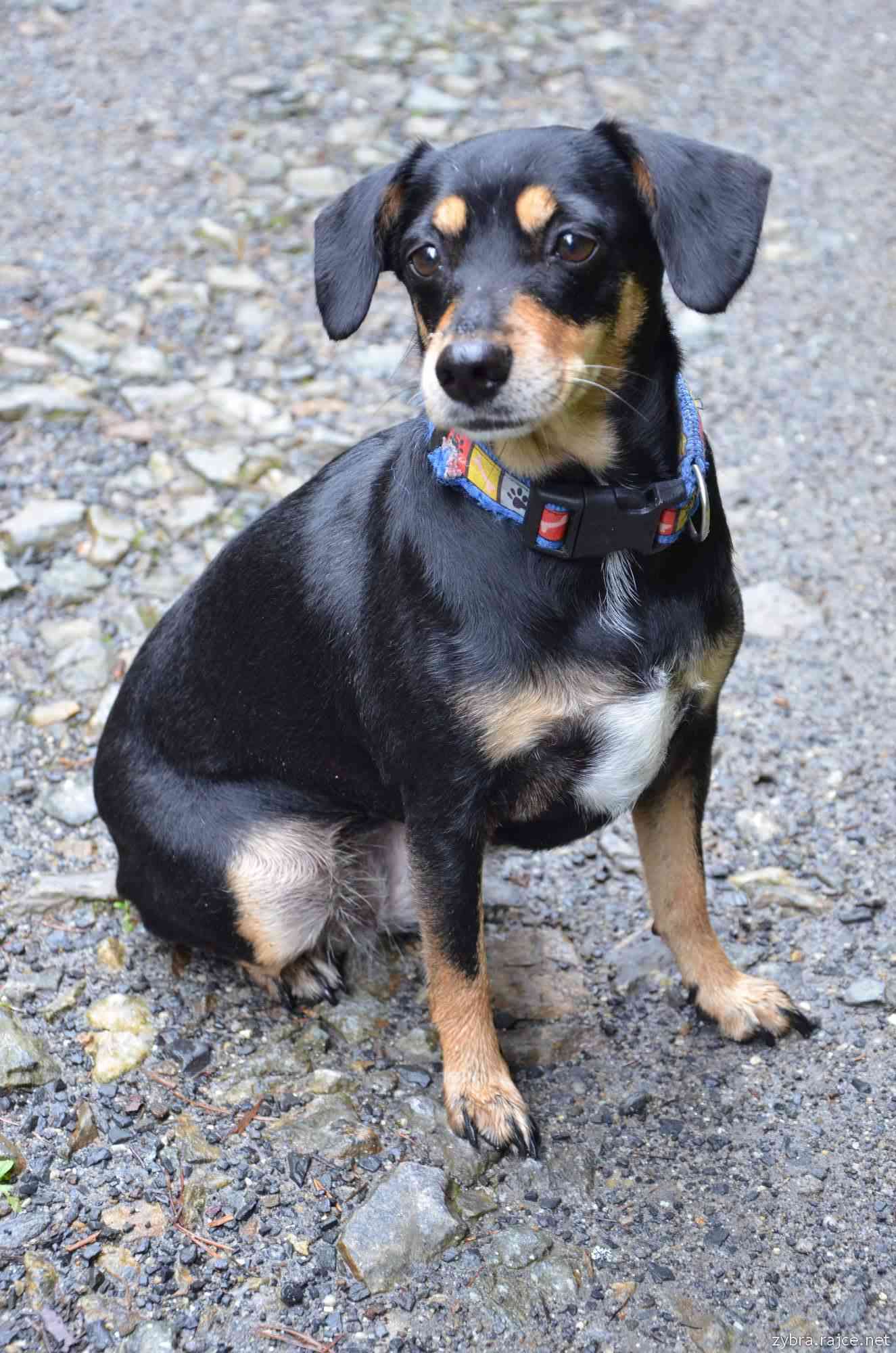
Fig.: Would you guess that the mother of this little bitch was a black Schnauzer?
.
When crossbreeds are crossbred
It is obvious that the difficulty to determine ancestor breeds increases with every crossed generation. The more mixed the dog’s origin is, the more mixed and diluted characteristics would be in his or her genetic signature. In average, puppies obtain 50 % of the genes of either of the parents, i.e. 25 % from the grandparents and 12.5 % from the great grandparents.
It can very well happen that not two puppies resemble each other in a litter of two mixed-bred parents. Dogs of mixed-bred origin can differ considerably in size, shape, colour, and character. The different characteristics of their close relatives are the result of genetic recombination, i.e. the exchange of various DNA parts between chromosomes, which results in obtaining a unique DNA combination.
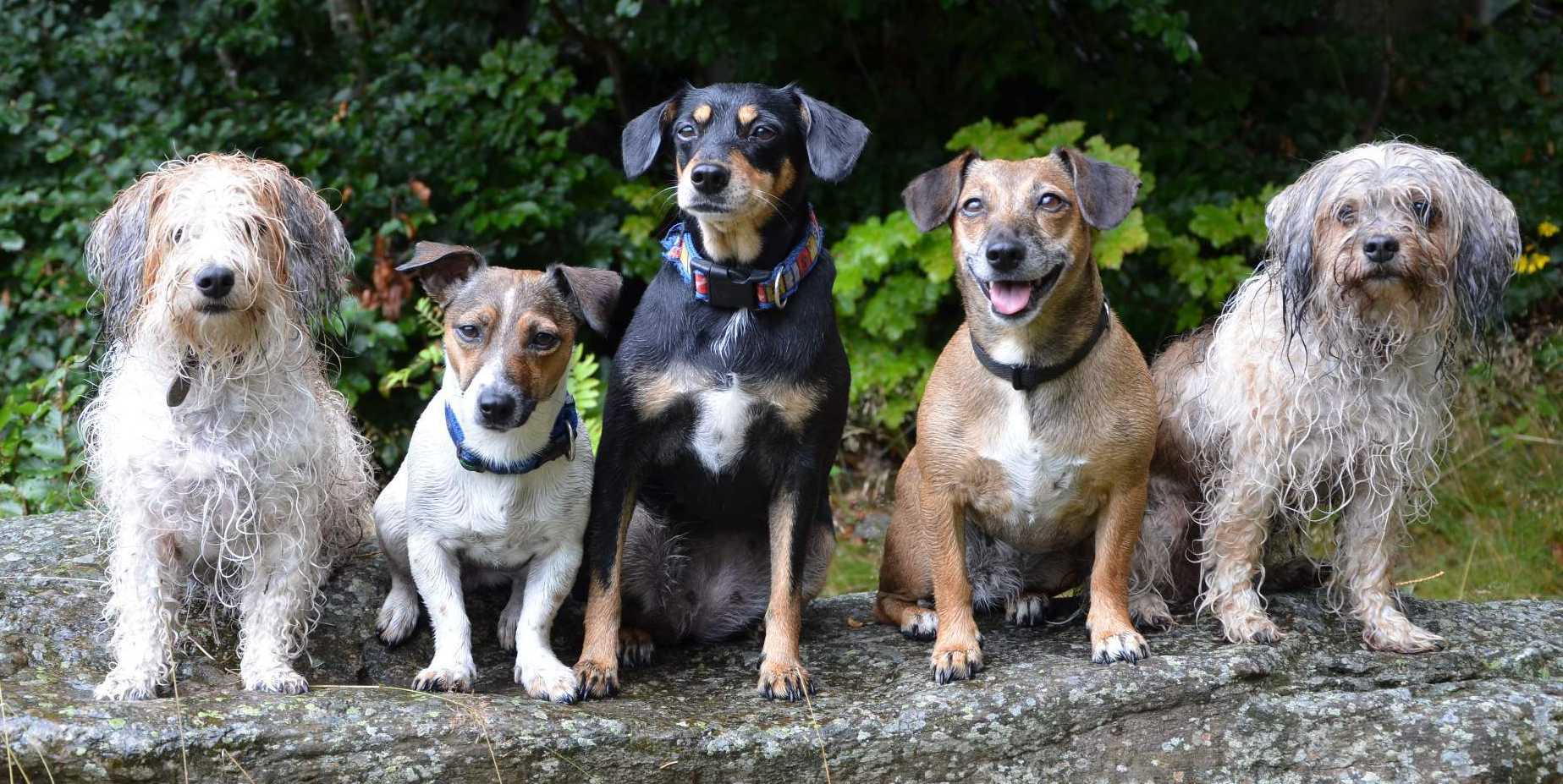
Fig.: The bitches shown on this picture are close relatives. You surely wouldn’t guess that the black one in the middle and the hairy one on the right are sisters, would you?
.
Dogs cannot speak but their DNA can
Three things are needed for precise breed detection: an extensive database of breeds, a sophisticated algorithm, and a great number of markers strategically located in the genome. The next-generation sequencing technique is used in testing. The CaniLine test establishes 1,877 traits in the canine genome. Such traits are then compared with the database of more than 280 different canine breeds containing over 12,000 samples, evaluating the conformity and similarity in the marker combinations of the dog being tested and of the breeds described in the database. This patented technology helped more than half a million dog owners all over the world to find valuable information about their four-legged friends and understand their unique needs.
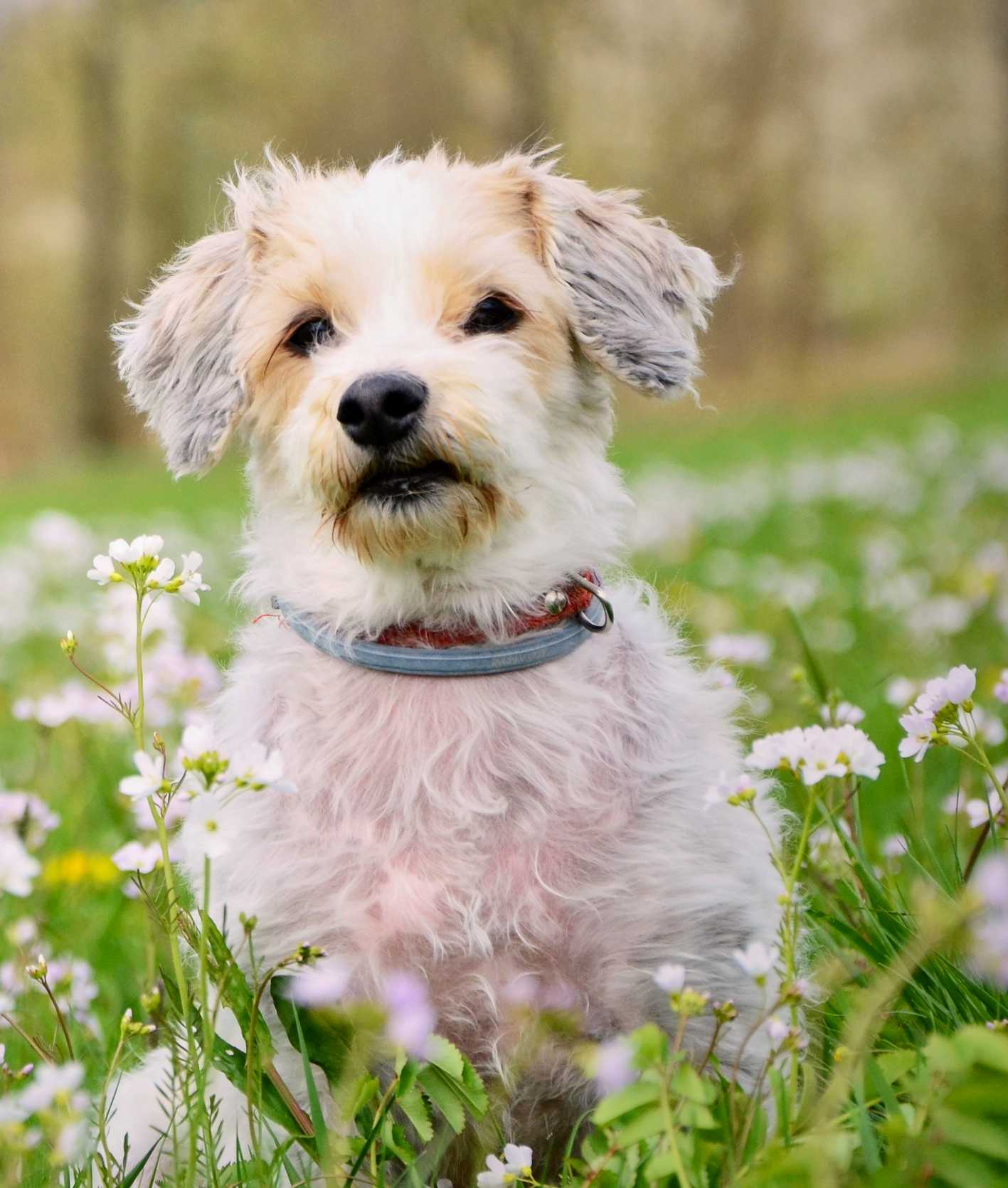
Fig.: Of which breeds were the Ben’s parents? Let CaniLine unveil it.
.
How about the purebred dogs?
The CaniLine test can be used to analyse not only canine mixed breeds but also the pure breeds and to compare precisely through further analyses as to how consistently the dog’s DNA corresponds with that of other purebred dogs of the same breed in the database. The DNA profiles of certain breeds can differ in dependence on their family lines and their specific geographic origin. Different DNA formulas, for instance, have been found in certain purebred dogs in the USA, Great Britain, or Australia.
The test CaniLine is not used to verify whether the dog with a pedigree certificate is purebred. The purity of purebred dogs with pedigree certificates is verified by confirmation of parentage (by determination of DNA-profiles of the parents and the offspring and their comparison). If it is confirmed that a dog is an offspring of purebred parents with pedigree certificates, the dog is also considered purebred. If samples of both parents are not available, it is possible to calculate the probability of the maternity/paternity by testing of only one parent and the offspring – this method can be used with breeds for which breed-specific allele frequencies of markers of DNA-profiles have been determined. We will be pleased to provide you with necessary information.
.
Test capacities and limitations
- The test will establish the breeding history three generations back, which means that we can find the breeds of the parents, grandparents and great-grandparents of the dog being tested.
- If a dog is made up of a breed missing in the breed database, it will be reported as a mix of breeds in the protocol. If you wish to verify the purity of a breed that is not listed, the test will most likely not provide the answer you are seeking.
- If all great-grandparents are mixed breeds, it is not possible to establish the breeds making up the dog being tested.
- The test cannot be used to validate pure breeding but to indicate a breed. If a dog has 7 or 8 purebred great-grandparents, the test will analyse to what extent the individual resembles / differs from the majority genetic traits of his/her breed.
- The test cannot be used to envisage dog’s behaviour or aggressiveness. Every dog is a unique individual whose physical and behavioural characteristics are the result of several factors, including genetics, training, treatment, and environment.
- Learning the unique origin of your mixed-breed dog will facilitate your understanding of his or her behaviour and nutritional and health needs. In mixed-breed puppies, the test can estimate their probable weight when grown up, which may help the owner to set an optimal diet and choose suitable food.
.
How to order the test and collect a sample?
If you are interested in this test, place an online order by pressing the key Order the examination (you will find the key in the upper-right corner or lower-right corner of this page).
Enter the dog data that you know in the order form. As to the type of sample collection select “Free sample kit for CaniLine”.
As soon as we receive your order, we will examine it and then we will send you confirmation of the order inclusive payment instructions.
After receipt of the payment, we will send you the sample kit in a gift-box by registered mail via Czech post services. The kit contains two brushes for sample collection, a return envelope, an order form with instructions for sample collection and a leaflet with information about the test.
The sample is collected by a buccal swap. The sample collection is painless and non-invasive. Please, do not send other samples. The testing laboratory will process only samples collected by this sample kit. You will receive the test results by email approximately one month after the sample delivery.
.
What do the test results include?
- The test results include the percentage of breed composition in the form of a family tree of 3 generations and a pie chart. It makes it possible to find out the breeds present at the levels of parents, grandparents and great-grandparents. The parent contributes to the puppy’s DNA with 50 %, while the grandparent with 25 % and great-grandparent with 12.5 %.
- Profiles of individual represented breeds.
- Expected weight profile of the dog being tested.
- Example of the result report can be found here:
Breed list - total 298 different breeds. Show list of all breeds Hide breeds
- Affenpinscher
- Afghan Hound
- Airedale Terrier
- Akita-Inu
- Alaskan Klee Kai
- Alaskan Malamute
- Alpine Dachsbracke
- American Bulldog
- American Cocker Spaniel
- American Eskimo Dog
- American Foxhound
- American Staffordshire Terrier
- American Water Spaniel
- Anatolian Shepherd Dog
- Appenzell Cattle Dog
- Arabian Greyhound
- Australian Cattle Dog
- Australian Kelpie
- Australian Koolie
- Australian Shepherd
- Australian Silky Terrier
- Australian Terrier
- Azawakh
- Barbet - French Water Dog
- Basenji
- Basset Fauve de Bretagne
- Basset Hound
- Bavarian Mountain Scenthound
- Beagle
- Bearded Collie
- Beauceron
- Bedlington Terrier
- Belgian Mastiff
- Belgian Shepherd
- Belgian Shepherd - Groenendael
- Belgian Shepherd - Laekenois
- Belgian Shepherd - Malinois
- Belgian Shepherd - Tervueren
- Bergamasco Shepherd
- Berger Picard
- Bernese Mountain Dog
- Bichon Frise
- Biewer Terrier
- Black and Tan Coonhound
- Bloodhound
- Blue Gascony Basset (Basset Bleu de Gascogne)
- Blue Picardy Spaniel
- Bluetick Coonhound
- Bolognese
- Border Collie
- Border Terrier
- Borzoi
- Boston Terrier
- Bourbonnais Pointing Dog (Braque du Bourbonnais)
- Bouvier des Flandres
- Boykin Spaniel
- Brazilian Terrier
- Briard (Berger de Brie)
- Brittany
- Broholmer
- Brusells Griffon (Griffon bruxellois)
- Bull Terrier
- Bullmastiff
- Cairn Terrier
- Canaan Dog
- Canadian Eskimo Dog
- Catalan Sheepdog
- Caucasian Shepherd Dog
- Cavalier King Charles Spaniel
- Central Asia Shepherd Dog (Sredneasiatskaya Ovtcharka)
- Chesapeake Bay Retriever
- Chihuahua
- Chinese Crested Dog
- Chinook
- Chow Chow
- Cirneco dell'Etna
- Clumber Spaniel
- Collie Rough
- Collie Smooth
- Coton de Tulear
- Cretan Hound
- Croatian Shepherd Dog (Hrvatski ovčar)
- Curly Coated Retriever
- Czech Terrier
- Czechoslovakian Wolfdog
- Dachshund Miniature Long-haired
- Dachshund Miniature Smooth-haired
- Dachshund Miniature Wire-haired
- Dachshund Standard Long-haired
- Dachshund Standard Smooth-haired
- Dachshund Standard Wire-haired
- Dalmatian
- Dandie Dinmont Terrier
- Danish-Swedish Farm Dog
- Deerhound
- Dobermann
- Dogo Argentino
- Dogo Canario
- Dogue de Bordeaux
- Drever
- Dutch Schapendoes
- Dutch Shepherd Dog
- East Siberian Laika
- Elo
- English Bulldog
- English Cocker Spaniel
- English Foxhound
- English Pointer
- English Setter
- English Springer Spaniel
- English Toy Terrier
- Entlebucher Mountain Dog
- Eurasian
- Field Spaniel
- Finnish Hound
- Finnish Lapphund (Suomenlapinkoira)
- Finnish Spitz (Suomenpystykorva)
- Flat Coated Retriever
- Fox Terrier Smooth
- Fox Terrier Wire
- French Bulldog
- Frisian Pointing Dog - Stabyhound (Stabijhoun)
- German Boxer
- German Hunting Terrier
- German Long-haired Pointing Dog
- German Pinscher
- German Rough-haired Pointing Dog
- German Shepherd Dog
- German Short-haired Pointing Dog
- German Wirehaired Pointer
- Glen of Imaal Terrier
- Golden Retriever
- Gordon Setter
- Grand Basset Griffon Vendéen
- Grand Griffon Vendéen
- Great Dane
- Great Swiss Mountain Dog
- Greyhound
- Griffon d'arręt ŕ poil dur Korthals
- Hamiltonstövare
- Harrier
- Havanese (Bichon Havanese)
- Hokkaido Inu (Hokkaido-Ken)
- Hovawart
- Hungarian Short-haired Pointing Dog
- Hungarian Wire-haired Pointing Dog
- Ibizan Hound
- Icelandic Sheepdog
- Irish Glen of Imaal Terrier
- Irish Red and White Setter
- Irish Red Setter
- Irish Soft Coated Wheaten Terrier
- Irish Terrier
- Irish Water Spaniel
- Irish Wolfhound
- Italian Corso Dog
- Italian Greyhound
- Italian Pointing Dog (Bracco Italiano)
- Jack Russell Terrier
- Jämthund
- Japanese Chin
- Japanese Spitz
- Kai Ken
- Karakachan dog
- Karelian Bear Dog
- Keeshond
- Kerry Blue Terrier
- King Charles Spaniel
- Kishu
- Komondor
- Kooikerhondje
- Korea Jindo Dog
- Kromfohrländer
- Kuvasz
- Labrador Retriever
- Laika Karelo-Finskaia
- Lakeland Terrier
- Lancashire Heeler
- Landseer (European Continental type)
- Lapponian Herder (Lapinporokoira)
- Large Munsterlander
- Leonberger
- Lhasa Apso
- Little Lion Dog (Petit Chien Lion)
- Magyar Agar (Hungarian Greyhound)
- Maltese
- Manchester Terrier
- Maremma and the Abruzzes Sheepdog
- Mastiff
- Medium size Spitz
- Mi-ki
- Miniature American Shepherd
- Miniature Bull Terrier
- Miniature Pinscher
- Mudi
- Neapolitan Mastiff
- Newfoundland
- Norfolk Terrier
- Norrbottenspets (Norrbottenspitz)
- Norwegian Buhund
- Norwegian Elkhound Grey (Norsk Elghund Grĺ)
- Norwegian Lundehund
- Norwich Terrier
- Nova Scotia Duck Tolling Retriever
- Old English Sheepdog (Bobtail)
- Otterhound
- Papillon
- Parson Russell Terrier
- Pekingese
- Phalene
- Pharaoh Hound
- Podenco Canario
- Polish Greyhound
- Polish Lowland Sheepdog
- Poodle Medium
- Poodle Miniature
- Poodle Standard
- Poodle Toy
- Portuguese Pointing Dog
- Portuguese Sheepdog
- Portuguese Warren Hound - portuguese Podengo
- Portuguese Water Dog
- Prague Ratter
- Pug
- Puli
- Pumi
- Pyrenean Mastiff
- Pyrenean Mountain Dog (Great Pyrenees)
- Pyrenean Sheepdog - smooth faced
- Pyrenean Sheepdog Long-haired
- Rhodesian Ridgeback
- Romagna Water Dog (Lagotto romagnolo)
- Rottweiler
- Russian Black Terrier
- Russian Toy Terrier
- Russian-European Laika
- Russkaya Tsvetnaya Bolonka
- Saarloos Wolfdog
- Saluki
- Samoyed
- Schipperke
- Schnauzer
- Schnauzer Giant
- Schnauzer Miniature
- Scottish Terrier
- Sealyham Terrier
- Serra da estrela Mountain Dog
- Shar Pei
- Shetland Sheepdog
- Shiba
- Shih Tzu
- Shikoku (Shikoku Ken)
- Siberian Husky
- Skye Terrier
- Slovakian Chuvach
- Small Munsterlander
- Small Swiss Hound - Small Jura Hound
- Small Swiss Hound - Small Bernese Hound
- Small Swiss Hound - Small Lucerne Hound
- Small Swiss Hound - Small Schwyz Hound
- South Russian Shepherd Dog
- Spaniel de Pont-Audemer
- Spanish Greyhound
- Spanish Waterdog
- Spinone Italiano
- St. Bernard Short-haired
- St. Bernard Long-haired
- Staffordshire Bull Terrier
- Sussex Spaniel
- Swedish Vallhund
- Swiss Hound - Bernese Hound
- Swiss Hound - Jura Hound
- Swiss Hound - Lucerne Hound
- Swiss Hound - Schwyz Hound
- Taigan
- Tatra Shepherd Dog
- Tenterfield terrier
- Thai Ridgeback
- Tibetan Mastiff
- Tibetan Spaniel
- Tibetan Terrier
- Toy Fox Terrier
- Toy Manchester Terrier
- Toy Spitz (Pomeranian)
- Transylvanian Hound
- Treeing Walker Coonhound
- Volpino Italiano
- Weimaraner
- Welsh Corgi Cardigan
- Welsh Corgi Pembroke
- Welsh Springer Spaniel
- Welsh Terrier
- West Highland White Terrier
- West Siberian Laika
- Whippet
- White Swiss Shepherd Dog
- Wirehaired Pointing Griffon
- Yorkshire Terrier




